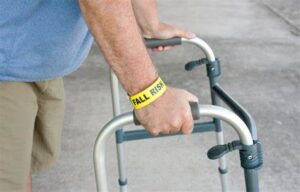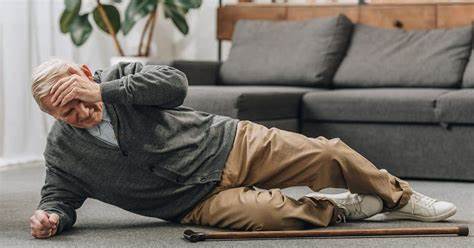Reduce Your Risk of Falling by Taking These Simple Steps
 A fall can result in unwanted outcomes, including injury, loss of independence, and a decreased ability to do the things that are most important to you or a loved one. Each year, 3 million older adults are treated in emergency departments for fall injuries. Even falls that don’t lead to injury can provoke a fear of falling that causes you to avoid the activities that keep you healthy, strong, and ultimately less likely to fall. While falls are dangerous, the good news is that experts say they’re largely preventable.
A fall can result in unwanted outcomes, including injury, loss of independence, and a decreased ability to do the things that are most important to you or a loved one. Each year, 3 million older adults are treated in emergency departments for fall injuries. Even falls that don’t lead to injury can provoke a fear of falling that causes you to avoid the activities that keep you healthy, strong, and ultimately less likely to fall. While falls are dangerous, the good news is that experts say they’re largely preventable.
The American Physical Therapy Association offers the following tips to help you reduce your risk of falling.
- Get moving. For older adults, physical activity reduces the risk of falling and fall-related injuries. Stay active to maintain the strength, flexibility, coordination, and balance needed to prevent falls. From swimming to yoga to walking, take part in a variety of physical activities that you enjoy. Talk to your Physical Therapist to determine which activities are safe for you.
- Know your risks. A Physical Therapist can help you assess your risk factors and develop a plan to address them so you can remain independent. Tell your doctor or PT if you have any dizziness, loss of balance, or trouble seeing. Also tell them whether you fell in the last year.
- Check your medications. Many drugs can cause dizziness, loss of balance, blurry vision, and more. If you have any of these symptoms, review your medications with your pharmacist or doctor.
- Assess your home’s safety. Assess your home to fix or remove anything that could cause trips or slips, such as throw rugs, clutter, poor lighting, and wobbly furniture or handrails. It’s also a good idea to install a secure grab bar in the shower and next to the toilet for sturdy support on slippery floors. If you can’t make these safety improvements yourself, ask a friend or family member to help. Check with your doctor, PT, or area agency for local programs that offer home safety assessments.
- Work with a PT. Physical therapy (with exercise) focused on balance, stability, and the ability to perform common tasks is recommended and can prevent falls, according to the U.S. Preventative Services Task Force. Physical Therapists are able to help you avoid a fall in the first place, as they are movement experts who can work with you to assess your fall risk factors and develop a plan to address them. They will advise you on making your home safer, educate you about medical risk factors linked to falls, and design you a safe balance training program specific to you.
To learn more about the hands-on care, patient education, and prescribed movement our Physical Therapists can provide, you can read more on our website or give us a call at (810) 385-7405. With the right resources and support, you can reduce your risk of a fall and maintain your quality of life.

